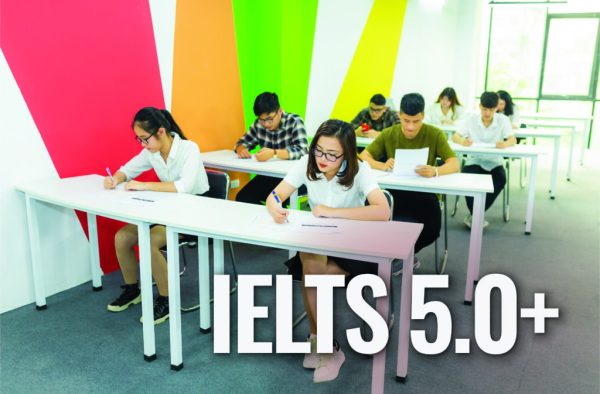Nhận tư vấn về lộ trình học
The Step Pyramid of Djoser
21 Tháng Chín, 2023 | 494 lượt xem
Giải đề IELTS Reading Cambridge 16.. Test 1. Passage 2. The Step Pyramid of Djoser. Kim tự tháp bậc thang của Djoser.

(Đoạn A)
The pyramids are the most famous monuments of ancient Egypt and still hold enormous interest for people in the present day. These grand, impressive tributes to the memory of the Egyptian kings have become linked with the country even though other cultures, such as the Chinese and Mayan, also built pyramids. The evolution of the pyramid form has been written and argued about for centuries. However, there is no question that, as far as Egypt is concerned, it began with one monument to one king designed by one brilliant architect: the Step Pyramid of Djoser at Saqqara.
Kim tự tháp là những tượng đài nổi tiếng nhất của Ai Cập cổ đại và chúng vẫn thu hút được sự quan tâm của mọi người cho đến nay. Những công trình vĩ đại và ấn tượng này được xây để tưởng nhớ các vị vua Ai cập, và chúng đã trở biểu tượng của đất nước này, mặc dù các nền văn hóa khác như Trung Quốc và Maya cũng đã xây dựng kim tự tháp. Sự tiến hóa của các dạng kim tự tháp đã được ghi chép lại và gây ra nhiều tranh luận trong nhiều thế kỉ. Tuy nhiên, có một điều không thể chối cãi khi nhắc đến kim tự tháp Ai Cập là công trình đầu tiên được xâu dựng cho một vị vua và được thiết kế bởi một kiến trúc sư đại tài: Kim tự tháp Bậc thang Djoser ở Saqqara.
(Đoạn B)
Djoser was the first king of the Third Dynasty of Egypt and the first to build in stone. Prior to Djoser’s reign, tombs were rectangular monuments made of dried clay brick, which covered underground passages where the deceased person was buried. For reasons which remain unclear, Djoser’s main official, whose name was Imhotep, conceived of building a taller, more impressive tomb for his king by stacking stone slabs on top of one another, progressively making them smaller, to form the shape now known as the Step Pyramid. (Question 25) Djoser is thought to have reigned for 19 years, but some historians and scholars attribute a much longer time for his rule, owing to the number and size of the monuments he built.
Djoser là vị vua đầu tiên ở Vương Triều thứ 3 của Ai Cập và là người đầu tiên xây dựng kim tự tháp bằng đá. Trước triều đại của Djoser, những lăng mộ được xây theo hình chữ nhật và được làm bằng gạch đất sét khô, bao phủ các lối đi dưới lòng đất nơi người đã khuất được chôn cất. Theo một vài nguyên nhân mà hiện nay vẫn chưa sáng tỏ, cận thần chính của Djoser, tên là Imhotep, đã lên ý tưởng xây dựng một lăng mộ cao hơn, ấn tượng hơn cho vị vua của mình bằng cách xếp chồng các phiến đá lên nhau, dần dần làm cho chúng nhỏ lại, để tạo thành hình dạng như ngày nay được gọi là Kim tự tháp bậc thang. Djoser được cho là trị vì trong vòng 19 năm, nhưng một số nhà sử học và các học giả cho rằng thời gian cai trị của ông lâu hơn nhiều, dựa trên số lượng và kích thước của các di tích mà ông đã xây dựng.
(Đoạn C)
The Step Pyramid has been thoroughly examined and investigated over the last century, and it is now known that the building process went through many different stages. Historian Marc Van de Mieroop comments on this, writing ‘Much experimentation was involved, which is especially clear in the construction of the pyramid in the center of the complex. It had several plans … before it became the first Step Pyramid in history, piling six levels on top of one another … The weight of the enormous mass was a challenge for the builders, who placed the stones at an inward incline in order to prevent the monument breaking up.’
Quá trình nghiên cứu và tìm hiểu về Kim tự tháp Bậc thang đã diễn ra từ thế kỷ trước, và hiện nay người ta biết rằng quá trình xây dựng đã trải qua rất nhiều giai đoạn khác nhau. Nhà sử học Marc Van de Mieroop nhận xét rằng: “Nhiều thử nghiệm đã được thực hiện, rõ nhất là ở phần xây dựng kim tự tháp ở trung tâm của công trình. Có một số thiết kế đã được đưa ra… trước khi nó trở thành Kim tự tháp bậc thang đầu tiên trong lịch sử, với 6 tầng chồng lên nhau…”. Trọng lượng của khối đá khổng lồ này là một thử thách đối với người xây dựng, họ đã phải đặt các viên đá ở một độ nghiêng hướng vào trong để ngăn chặn công trình bị bị đổ.”
(Đoạn D)
When finally completed, the Step Pyramid rose 62 meters high and was the tallest structure of its time. The complex in which it was built was the size of a (Question 21) city in ancient Egypt and included a temple, courtyards, shrines, and living quarters for the (Question 22) priests. It covered a region of 16 hectares and was surrounded by a wall 10.5 meters high. The wall had 13 false doors cut into it with only one true entrance cut into the south-east corner; the entire wall was then ringed by a (Question 23) trench 750 meters long and 40 meters wide. The false doors and the trench were incorporated into the complex to discourage unwanted visitors. If someone wished to enter, he or she would have needed to know in advance how to find the (Question 24) location of the true opening in the wall. Djoser was so proud of his accomplishment that he broke the tradition of having only his own name on the monument and had Imhotep’s name carved on it as well.
Khi được hoàn thành, Kim tự tháp bậc thang cao đến 62m và là công trình cao nhất thời bấy giờ. Khu phức hợp nơi mà nó được xây dựng có quy mô ngang với một thành phố ở Ai Cập cổ đại và bao gồm một ngôi đền, nhiều khu đất, đền thờ và khu sinh hoạt cho các linh mục. Nó có diện tích 16 héc ta và được bao quanh bởi một bức tường cao 10.5m. Bức tường có 13 cánh cửa giả lắp ở đó với duy nhất 1 lối vào thật góc Đông Nam; toàn bộ bức tường sau đó được bao quanh bởi một đường rãnh dài 750m và rộng 40m. Những cánh cửa giả và đường rãnh được kết hợp vào khu phức hợp để tránh những vị khách không mong muốn. Nếu ai đó muốn vào, người đó cần phải biết trước cách tìm vị trí của lối vào thật trên tường. Djoser rất tự hào về thành tựu của mình đến mức ông ấy đã khắc tên cả Imhotep ở trên công trình này, mà theo quy tắc thì chỉ được khắc tên của một mình ông.
(Đoạn E)
The burial chamber of the tomb, where the king’s body was laid to rest, was dug beneath the base of the pyramid, surrounded by a vast maze of long tunnels that had rooms off them to discourage robbers. One of the most mysterious discoveries found inside the pyramid was a large number of stone vessels. Over 40,000 of these vessels, of various forms and shapes, were discovered in storerooms off the pyramid’s underground passages. They are inscribed with the names of rulers from the First and Second Dynasties of Egypt and made from different kinds of stone. There is no agreement among scholars and archaeologists on why the vessels were placed in the tomb of Djoser or what they were supposed to represent. The archaeologist Jean-Philippe Lauer, who excavated most of the pyramid and complex, believes they were originally stored and then given a ‘proper burial’ by Djoser in his pyramid to honor his predecessors. There are other historians, however, who claim the vessels were dumped into the shafts as yet another attempt to prevent grave robbers from getting to the king’s burial chamber.
Hầm chôn cất của lăng mộ, nơi đặt thi hài của nhà vua, được đào bên dưới chân của kim tự tháp, bao quanh bởi một mê cung rộng lớn với những đường hầm dài có các khoảng trống để ngăn những kẻ cướp mộ. Một trong những khám phá bí ẩn nhất bên trong kim tự tháp là số lượng lớn các bình đá nằm dưới đó. Hơn 40,000 chiếc bình trong số này, với nhiều hình dạng khác nhau, đã được phát hiện trong các kho chứa bên ngoài lối đi dưới lòng đất của kim tự tháp. Chúng được khắc tên của các vị vua cai trị từ Vương triều thứ nhất và Vương triều thứ 2 của Ai Cập và được làm từ các loại đá khác nhau. Các học giả và các nhà khảo cổ học có những ý kiến khác nhau về lý do tại sao những chiếc bình được đặt trong lăng mộ của Djoser hay chúng có thể hiện ý nghĩa gì. Nhà khảo cổ học Jean – Philippe Lauer, người đã khai quật hầu hết kim tự tháp và khu phức hợp, tin rằng ban đầu chúng được cất giữ và sau đó được “chôn cất tử tế” bởi Djoser trong kim tự tháp của mình để thể hiện lòng tôn kính những người tiền nhiệm của mình. Tuy nhiên, có một vài nhà sử học khác đã cho rằng những chiếc bình đã được đưa vào hầm với mục đích để ngăn chặn những tên cướp mộ đến nơi chôn cất của nhà vua.
(Đoạn F)
Unfortunately, all of the precautions and intricate design of the underground network did not prevent ancient robbers from finding a way in. (Question 26) Djoser’s grave goods, and even his body, were stolen at some point in the past and all archaeologists found were a small number of his valuables overlooked by the thieves. There was enough left throughout the pyramid and its complex, however, to astonish and amaze the archaeologists who excavated it.
Thật không may, tất cả các biện pháp phòng chống và thiết kế phức tạp của hệ thống dưới lòng đất cũng đã không ngăn chặn được những kẻ cướp mộ tìm đường vào trong. Đồ dùng của Djoser và thậm chí cả thi thể của ông đều đã bị đánh cắp ở những thời điểm trong quá khứ và tất cả những gì các nhà khảo cổ tìm thấy chỉ còn là một số lượng nhỏ những vật có giá trị của ông mà các tên trộm bỏ lại. Tuy nhiên, những di vật còn sót lại trong khắp kim tự tháp, cũng đủ khiến các nhà khảo cổ học khi khai quật cảm thấy ngạc nhiên và sững sờ.
(Đoạn G)
Egyptologist Miroslav Verner writes, ‘Few monuments hold a place in human history as significant as that of the Step Pyramid in Saqqara … It can be said without exaggeration that this pyramid complex constitutes a milestone in the evolution of monumental stone architecture in Egypt and in the world as a whole.’ The Step Pyramid was a revolutionary advance in architecture and became the archetype which all the other great pyramid builders of Egypt would follow.
Nhà Ai Cập học Miroslav Verne viết : “Rất ít các di tích giữ một vị trí quan trọng trong lịch sử nhân loại như Kim tự tháp bậc thang ở Saqqara… Nói một cách không ngoa rằng quần thể kim tự tháp này đã tạo nên một cột mốc quan trọng trong sự phát triển của kiến trúc đá hoành tráng ở Ai Cập và trên toàn thế giới.” Kim tự tháp bậc thang là một bước tiến mang tính cách mạng trong kiến trúc và trở thành nguyên mẫu mà tất cả các nhà xây dựng kim tự tháp vĩ đại khác của Ai Cập sẽ noi theo.
Danh mục
IELTS Reading. Questions 14-20
Questions 14 – 20
Reading Passage 2 has seven paragraphs, A-G.
Choose the correct heading for each paragraph from the list of headings below.
List of Headings
i The areas and artefacts within the pyramid itself
ii A difficult task for those involved
iii A king who saved his people
iv A single certainty among other less definite facts
v An overview of the external buildings and areas
vi A pyramid design that others copied
vii An idea for changing the design of burial structures
viii An incredible experience despite the few remains
ix The answers to some unexpected questions
Giải thích đáp án các câu 14-20
Câu 14:
Paragraph A
=> Đáp án câu 14: iv – A single certainty among other less definite facts
Đối chiếu các thông tin trong đoạn văn với tiêu đề:
other less definite facts = the evolution has been written and argued
a single certainty = there is no question that…
The evolution of the pyramid form has been written and argued about for centuries. However, there is no question that, as far as Egypt is concerned, it began with one monument to one king designed by one brilliant architect: the Step Pyramid of Djoser at Saqqara.
Câu 15:
Paragraph B
=> Đáp án câu 15: vii – An idea for changing the design of burial structures
Đối chiếu các thông tin trong đoạn văn với tiêu đề:
changing the design = taller, more impressive, stone, smaller
burial structures = tombs
Djoser was the first king of the Third Dynasty of Egypt and the first to build in stone. Prior to Djoser’s reign, tombs were rectangular monuments made of dried clay brick,… For reasons which remain unclear, Djoser’s main official, whose name was Imhotep, conceived of building a taller, more impressive tomb for his king by stacking stone slabs on top of one another, progressively making them smaller, to form the shape now known as the Step Pyramid.
Câu 16:
Paragraph C
=> Đáp án câu 16: ii – A difficult task for those involved
Đối chiếu các thông tin trong đoạn văn với tiêu đề:
A difficult task = a challenge
those involved = the builders
Historian Marc Van de Mieroop comments on this, writing ‘Much experimentation was involved, which is especially clear in the construction of the pyramid in the center of the complex. It had several plans … before it became the first Step Pyramid in history, piling six levels on top of one another … The weight of the enormous mass was a challenge for the builders, who placed the stones at an inward incline in order to prevent the monument breaking up.’
Câu 17:
Paragraph D
=> Đáp án câu 17: v – An overview of the external buildings and areas
Đối chiếu các thông tin trong đoạn văn với tiêu đề:
external building = the complex in which it was built
area = region
When finally completed, the Step Pyramid rose 62 meters high and was the tallest structure of its time. The complex in which it was built was the size of a city in ancient Egypt and included a temple, courtyards, shrines, and living quarters for the priests. It covered a region of 16 hectares and was surrounded by a wall 10.5 meters high. The wall had 13 false doors cut into it with only one true entrance cut into the south-east corner;…
Câu 18:
Paragraph E
=> Đáp án câu 18: i – The areas and artefacts within the pyramid itself
Đối chiếu các thông tin trong đoạn văn với tiêu đề:
artefacts = stone vessels
area = burial chamber
within the pyramid = the base of the pyramid/ inside the pyramid
The burial chamber of the tomb, where the king’s body was laid to rest, was dug beneath the base of the pyramid, surrounded by a vast maze of long tunnels that had rooms off them to discourage robbers. One of the most mysterious discoveries found inside the pyramid was a large number of stone vessels. Over 40,000 of these vessels, of various forms and shapes, were discovered in storerooms off the pyramid’s underground passages…
Câu 19:
Paragraph F
=> Đáp án câu 19: viii – An incredible experience despite the few remains
Đối chiếu các thông tin trong đoạn văn với tiêu đề:
incredible experience = to astonish and amaze
few = a small number/ enough left
remains = valuables
Djoser’s grave goods, and even his body, were stolen at some point in the past and all archaeologists found were a small number of his valuables overlooked by the thieves. There was enough left throughout the pyramid and its complex, however, to astonish and amaze the archaeologists who excavated it.
Câu 20:
Paragraph G
=> Đáp án câu 20: vi – A pyramid design that others copied
Đối chiếu các thông tin trong đoạn văn với tiêu đề:
design = architecture
others = pyramid builders
copy = follow
It can be said without exaggeration that this pyramid complex constitutes a milestone in the evolution of monumental stone architecture in Egypt and in the world as a whole.’ The Step Pyramid was a revolutionary advance in architecture and became the archetype which all the other great pyramid builders of Egypt would follow.
IELTS Reading. Questions 21-24
Questions 21-24
Complete the notes below.
Choose ONE WORD ONLY from the passage for each answer.
Giải thích đáp án các câu 21 – 24
Câu 21:
The complex that includes the Step Pyramid and its surroundings is considered to be as big as an Egyptian………………….. of the past.
=> Đáp án Câu 21: city
Dẫn chứng trong đoạn D:
The complex in which it was built was the size of a city in ancient Egypt…
as big as = the size of
the past = ancient
Egyptian = Egypt
Câu 22:
The area outside the pyramid included accommodation that was occupied by………. along with many other buildings and features.
=> Đáp án Câu 22: priests
Dẫn chứng trong đoạn D:
The complex…included a temple, courtyards, shrines, and living quarters for the priests.
the are outside the pyramid = the complex
accommodation = living quarters
many other buildings and features = a temple, courtyards, shrines
Câu 23:
A wall ran around the outside of the complex and a number of false entrances were built into this. In addition, a long …..…. encircled the wall.
=> Đáp án Câu 23: trench
Dẫn chứng trong đoạn D:
The wall had 13 false doors cut into it with only one true entrance cut into the south-east corner; the entire wall was then ringed by a trench 750 meters long and 40 meters wide.
a number of = 13
entrances = false
cut into = built into
encircled = ringed
Câu 24:
As a result, any visitors who had not been invited were cleverly prevented from entering the pyramid grounds unless they knew the … of the real entrance.
=> Đáp án Câu 24: location
Dẫn chứng trong đoạn D:
The false doors and the trench were incorporated into the complex to discourage unwanted visitors. If someone wished to enter, he or she would have needed to know in advance how to find the location of the true opening in the wall.
any visitors who had not been invited = unwanted visitors
prevented =discourage
the real entrance = the true opening
IELTS Reading. Questions 25-26
Questions 25 – 26
Choose TWO letters, A-E.
Which TWO of the following points does the writer make about King Djoser?
A. Initially he had to be persuaded to build in stone rather than clay.
B. There is disagreement concerning the length of his reign.
C. He failed to appreciate Imhotep’s part in the design of the Step Pyramid.
D. A few of his possessions were still in his tomb when archaeologists found it.
E. He criticized the design and construction of other pyramids in Egypt.
Giải thích đáp án các câu 25-26
=> Đáp án Câu 25, 26: B, D
Dẫn chứng trong đoạn B:
Djoser is thought to have reigned for 19 years, but some historians and scholars attribute a much longer time for his rule…
=> đáp án B: disagreement concerning the length of his reign
Dẫn chứng trong đoạn F:
Djoser’s grave goods, and even his body, were stolen at some point in the past and all archaeologists found were a small number of his valuables overlooked by the thieves.
=> đáp án D: his possessions were still in his tomb
Bí quyết chinh phục IELTS Reading
Để đạt điểm cao trong IELTS Reading, bạn nên nắm rõ tips và chiến lược để làm bài với từng dạng đề cụ thể. Dù scanning và skimming là 2 kỹ năng nhất định phải dùng trong bài thi IELTS nhưng tùy từng dạng, chúng ta sẽ áp dụng ở những bước khác nhau.
Hãy tiếp tục theo dõi chuyên mục IELTS Reading của Universal Language Center và cùng tìm hiểu bí quyết chinh phục từng dạng đề thi IELTS Reading bạn nhé!
Để liên tục đánh giá trình độ hiện tại, hãy tham khảo bài thi tại đây: http://m.me/universal.edu.vn/
Hoặc tham dự thi thử bài thi IELTS IDP miễn phí tại các cơ sở của Universal Language Center:
- Cơ Sở 01: 262 Lạc Trung, Hai Bà Trưng, Hà Nội
- Cơ Sở 02: 114 Hoàng Như Tiếp, Long Biên, Hà Nội
- Cơ Sở 03: 12/36 Phan Kế Bính, Ba Đình, Hà Nội
- Cơ Sở 04: 619 Nguyễn Văn Cừ, Long Biên, Hà Nội
- Cơ Sở 05: 23 Tô Vĩnh Diện, Thanh Xuân, Hà Nội
- Cơ Sở 06: 222 Lý Nam Đế, Tân Quang, Tuyên Quang
- VPTNĐK: 1/58 Việt Hưng, Long Biên, Hà Nội
Tham khảo khóa học IELTS Cam kết đầu ra 7.5+ tại Universal: https://universal.edu.vn/khoa-hoc/khoa-hoc-ielts-mastery/
ĐĂNG KÝ NHẬN TIN






